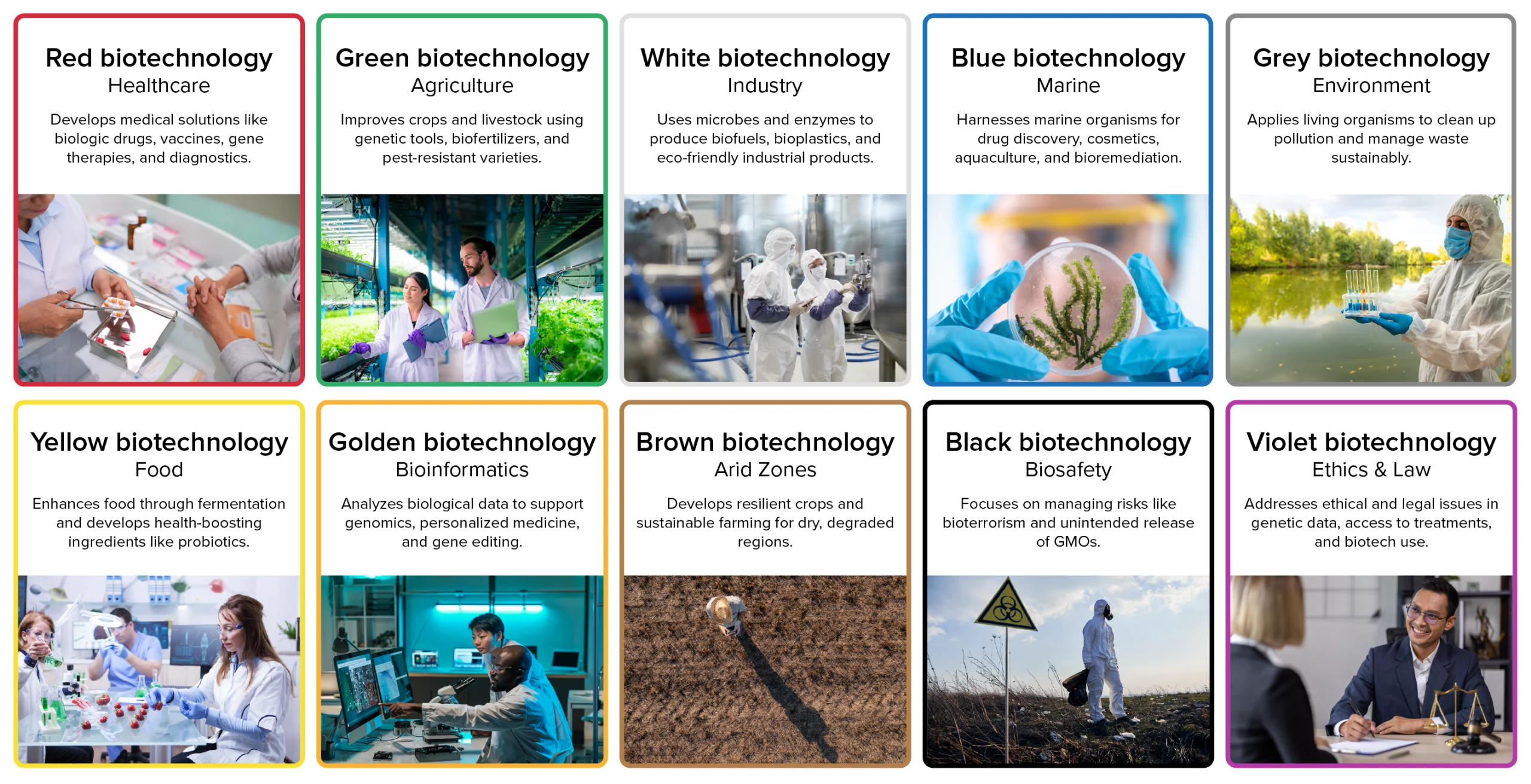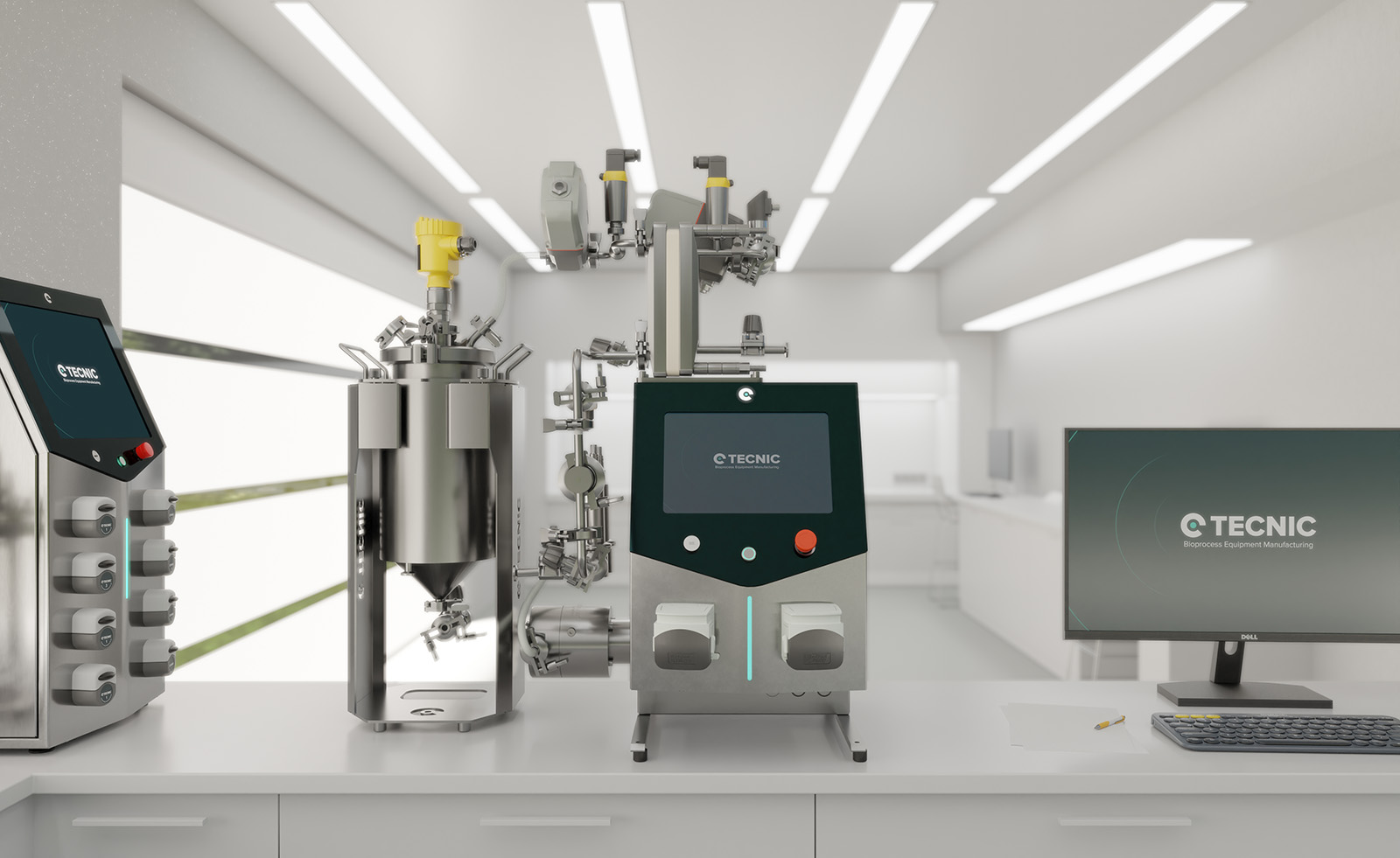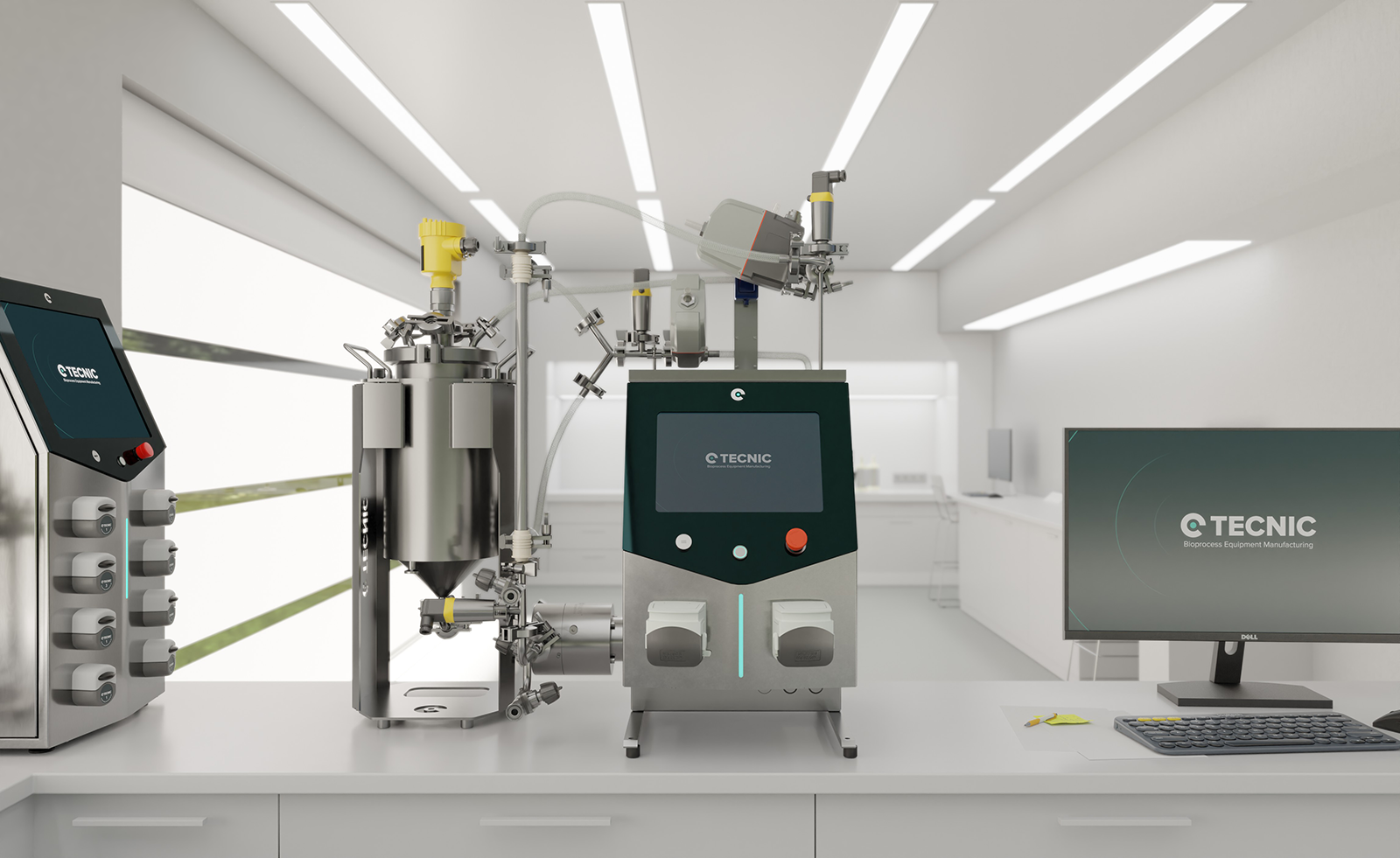Biotechnology is a scientific discipline that uses living organisms, cells, or their components to develop products, processes, and technologies with practical applications for society, encompassing various types of biotechnology. This field ranges from food and drug production to environmental and industrial solutions.
To better understand it, biotechnology is categorized into different areas based on their goals and applications, often represented by colors. This classification helps identify the sectors in which biotechnology is used: healthcare, food, agriculture, environment, industry, information technology, or ethics. Each type addresses specific challenges and offers context-specific solutions.
Below, we explain in more detail the main types of biotechnology and what each one does, highlighting their impact on daily life and on the future of key sectors such as medicine, sustainability, and resource production.
Types of biotechnology
- Red Biotechnology (Healthcare): Focuses on medical solutions, including the production of biologic drugs, vaccines, gene and cell therapies, and diagnostic tools. Notable examples include mRNA vaccines, monoclonal antibodies for cancer and autoimmune diseases, and CAR-T therapies for leukemia patients. Personalized medicine, which tailors treatments to a patient's genetic profile, also falls under this area.
- Green Biotechnology (Agriculture): Applies biotechnological tools to farming and livestock. It enables the development of genetically modified crops resistant to pests, drought, or disease, and enhances the nutritional quality of food. It is also used to create biofertilizers and biopesticides that reduce the environmental impact of agriculture. Examples include Bt corn, golden rice, and nitrogen-fixing bacteria.
- White Biotechnology (Industry): Uses microorganisms and enzymes to optimize industrial processes. It focuses on the sustainable production of materials like bioplastics, biofuels, detergents, and textiles, reducing the use of polluting chemicals and energy consumption. A concrete example is the use of engineered yeasts to produce ethanol from agricultural waste.
- Blue Biotechnology (Marine): Explores marine biological resources to discover new useful compounds. This includes drug development from algae or marine microorganisms, cosmetic ingredients, functional foods, and genetic improvement techniques in aquaculture. It also investigates the potential of bioremediation in polluted aquatic environments.
- Grey Biotechnology (Environment): Applies biotechnology to solve ecological problems, using organisms like bacteria, fungi, or plants to remove contaminants from water, air, and soil (bioremediation). It is also used in the treatment of solid waste and wastewater. For instance, some bacteria can degrade hydrocarbons or heavy metals in areas affected by industrial spills.
- Yellow Biotechnology (Food): Focused on producing and improving food through biotechnological processes. Microorganisms are used in fermentation to make yogurt, bread, cheese, or beer. Functional ingredients that promote health, such as probiotics or foods enriched with vitamins and minerals, are also developed.
- Golden Biotechnology (Bioinformatics): Integrates bioinformatics and the analysis of large biological data sets. It allows the study of genomes, proteins, and complex biological systems through specialized software. It’s essential for genetic sequencing projects, personalized medicine, vaccine design, and genetic editing tools like CRISPR.
- Brown Biotechnology (Arid Zones): Seeks biotechnological solutions adapted to regions with scarce water or degraded soils. It develops crops tolerant to extreme conditions, improves water use, and promotes sustainable agriculture in desert or semi-arid areas. It is crucial for food security in regions affected by climate change.
- Black Biotechnology (Biosafety): Studies the potential risks of misused biotechnology. This includes the prevention and control of threats like bioterrorism, uncontrolled release of genetically modified organisms, and synthetic pathogen creation. This field is closely linked to regulation, ethics, and safety in biotech use.
- Violet Biotechnology (Ethics and Law): Deals with ethical, legal, and social issues related to the development and use of biotechnological technologies. It covers topics such as gene editing, genomic data privacy, equitable access to treatments, and the regulation of genetically modified organisms. It plays a key role in ensuring that scientific progress is responsible and respects human rights and the environment.
Conclusion
Biotechnology, with its wide range of applications, proves to be a vital tool for tackling current challenges in health, the environment, industry, food production, and more. This classification not only aids understanding but also highlights its direct impact on everyday life and its role in building a more sustainable, efficient, and fair future.
At TECNIC, we work precisely at the intersection of these areas. Our bioprocess solutions, from bioreactors to filtration technologies, are designed to support the development of biotechnologies, facilitating the transition from research to industrial scale-up. We provide concrete tools that enable companies and research centers to turn the potential of biotechnology into applicable and sustainable realities.
Frequently Asked Questions (FAQ)
There are 10 types: red, green, white, blue, grey, yellow, golden, brown, black, and violet biotechnology.
It focuses on healthcare—developing vaccines, gene therapies, biologic drugs, and diagnostics.
It explores marine organisms for drug discovery, aquaculture, and environmental cleanup.
It addresses environmental challenges through bioremediation and waste treatment using living organisms.
It focuses on bioinformatics, using software to analyze genomes and design treatments.








